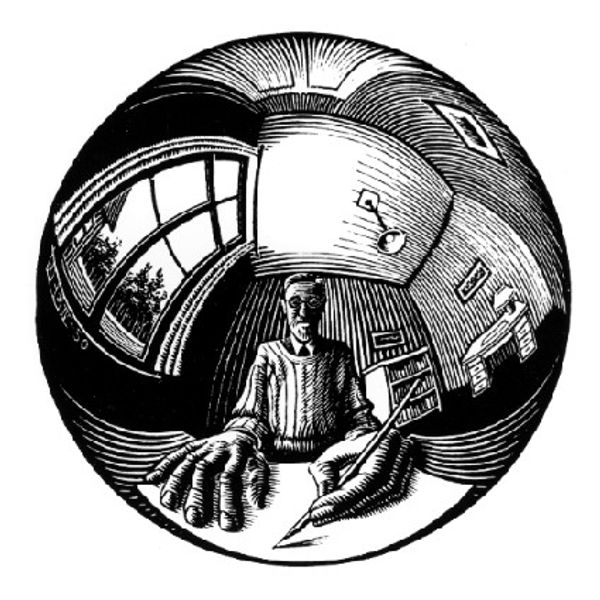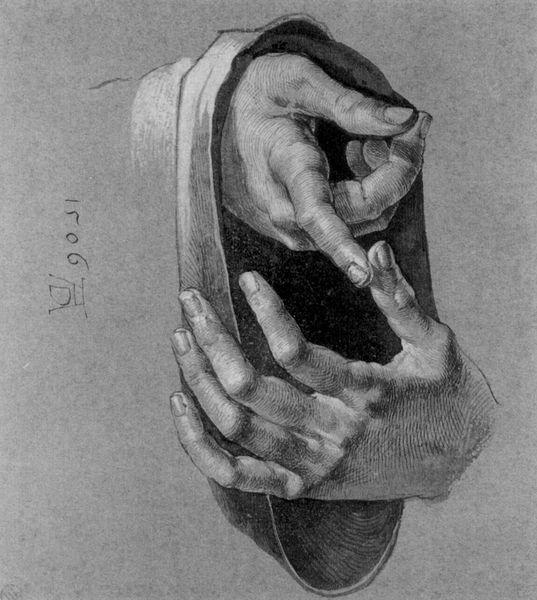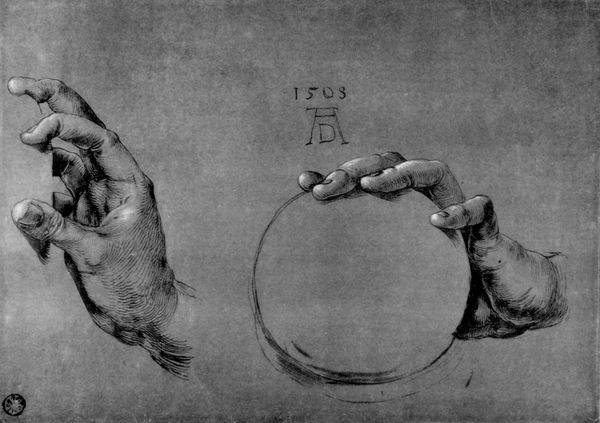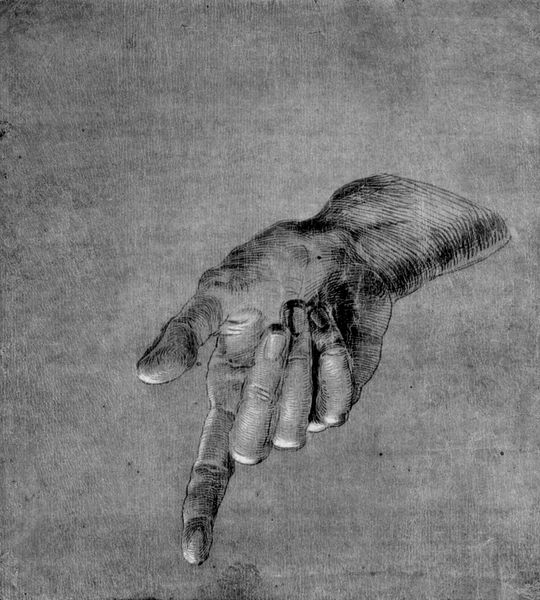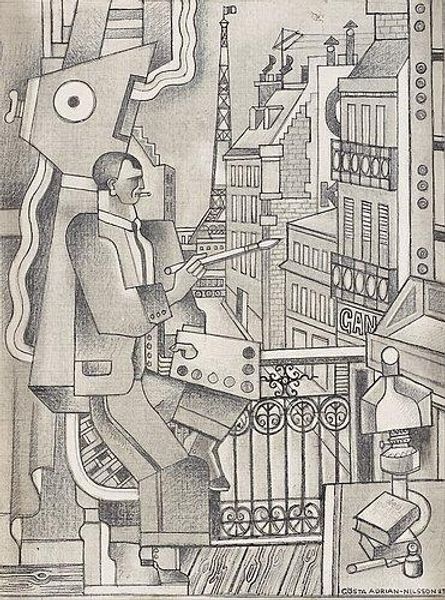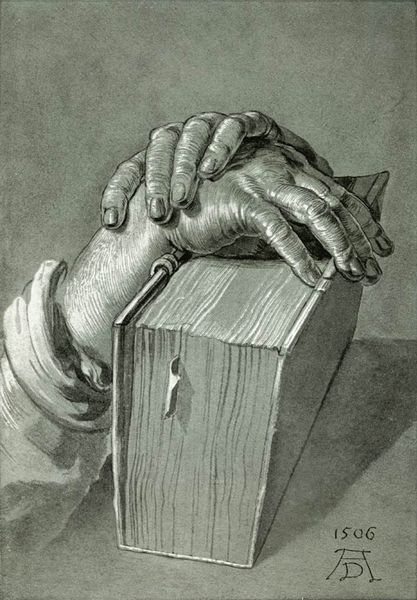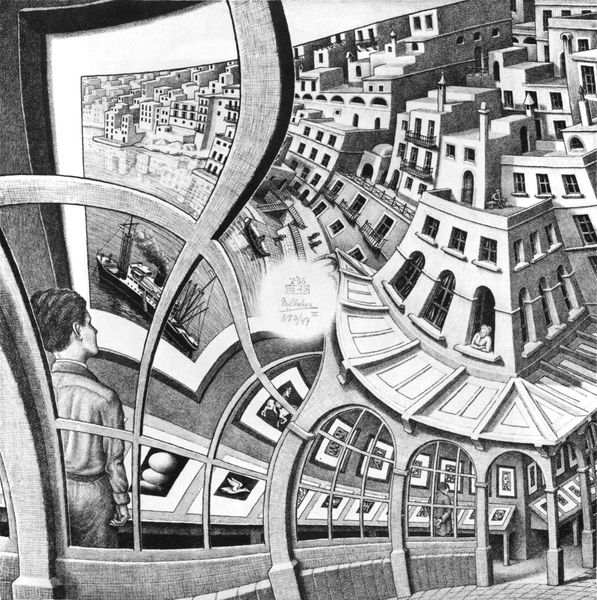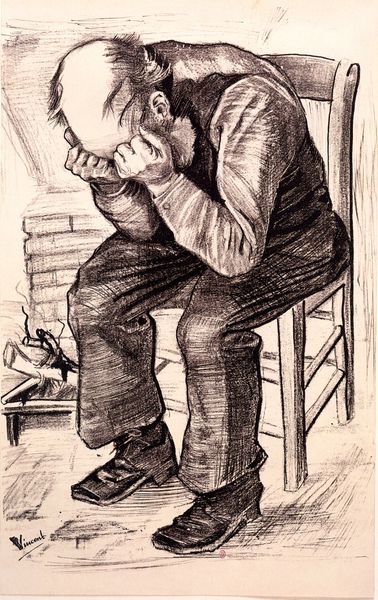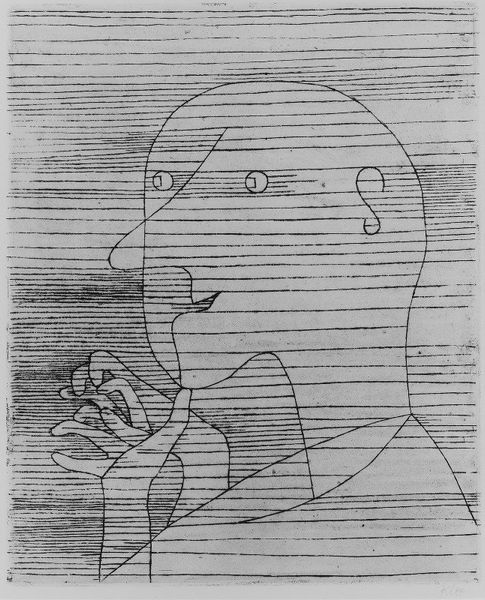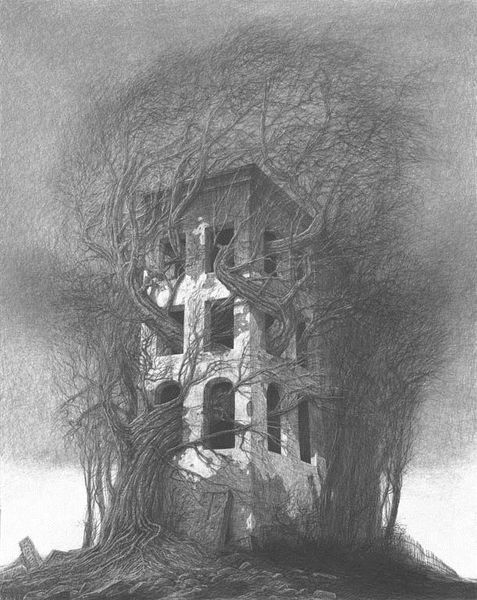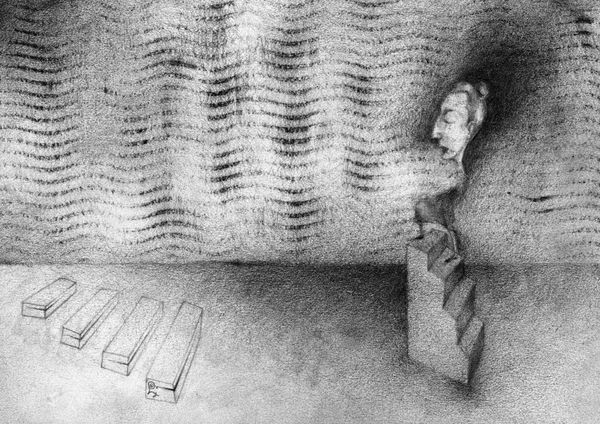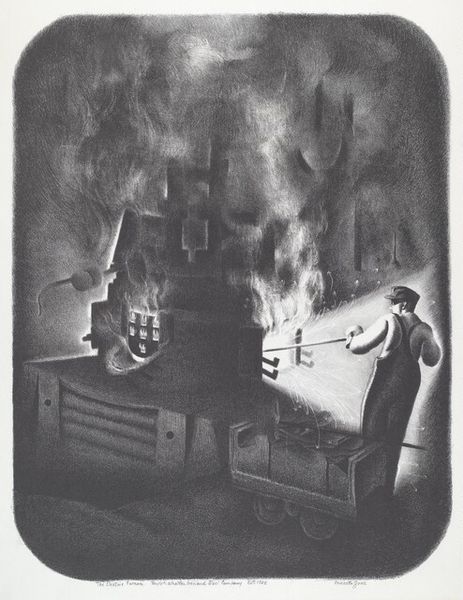
drawing, graphite
#
portrait
#
drawing
#
self-portrait
#
portrait
#
charcoal drawing
#
male portrait
#
intimism
#
geometric
#
black and white
#
graphite
#
modernism
Copyright: M.C. Escher,Fair Use
Curator: Welcome. We are looking at "Hand with Reflecting Sphere," a graphite and charcoal drawing created in 1935 by M.C. Escher. Editor: What strikes me immediately is the duality; the organic, almost hyper-realistic hand set against the geometric perfection of the sphere it holds, each rendered meticulously in black and white. Curator: Escher's use of the sphere acts as a symbolic "all-seeing eye," doesn't it? It's a visual metaphor for consciousness reflecting upon itself and the surrounding world, the artist trapped, quite literally, within his own creation. Editor: Precisely. Consider how Escher uses line and value to create depth within the spherical reflection. It's a complete interior space, observable in the curvature, perfectly composed within that contained form. Note how the perspective is, strictly speaking, impossible—yet entirely believable on a compositional level. Curator: The reflection includes a seated figure recognizable as the artist, enveloped within a comfortably middle-class, bourgeois interior. We might consider how Escher presents both himself and his milieu – preserved, captured. He sees himself seeing, and records himself recording; the doubling is poignant, don't you think? Editor: The technical skill, however, should not be understated. Look at the textures Escher creates. The contrast of skin to glass is incredible; a mastery of graphite allowing for very smooth gradients up against deliberately rough mark-making. It’s masterful juxtaposition. Curator: And how fascinating that a "self-portrait" avoids direct eye contact! The eye looking directly out, engaging directly. Instead we receive, a layered reflection— a cultural memory embedded with symbolism. A symbol within a symbol. It gives a feeling of distance, but that is precisely the intimate moment. Editor: Indeed. Looking closer only reveals new geometries. The hand’s placement and the reflection within the sphere…it is expertly rendered, but what it really demonstrates to me is control, even an obsessive commitment to manipulating perspective. Curator: This image remains culturally potent. Its recursive, reflective imagery taps into our collective desire for introspection and artistic self-awareness. Thank you for joining us to unpack some of that! Editor: Thank you. Hopefully this dialogue encourages you to closely consider the formal choices M.C. Escher made with "Hand with Reflecting Sphere".
Comments
No comments
Be the first to comment and join the conversation on the ultimate creative platform.
